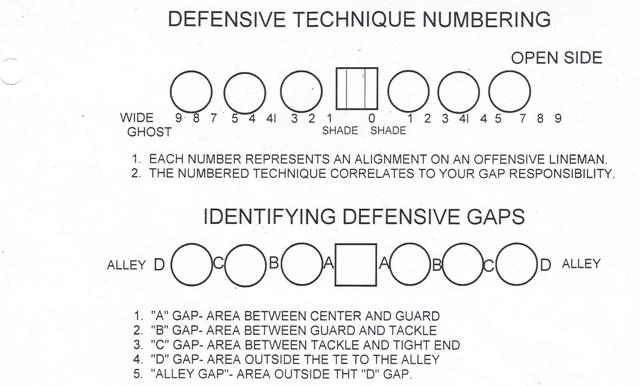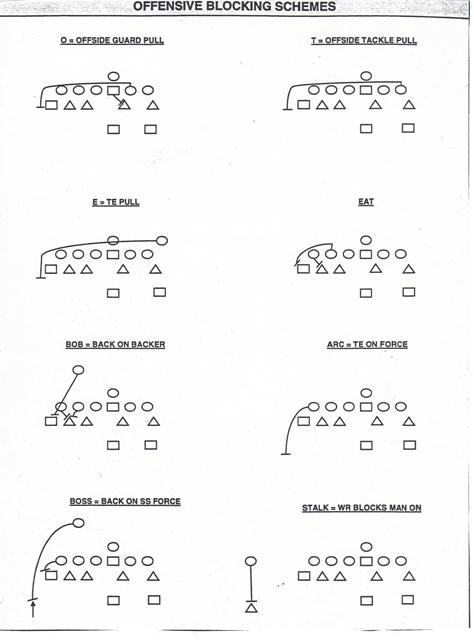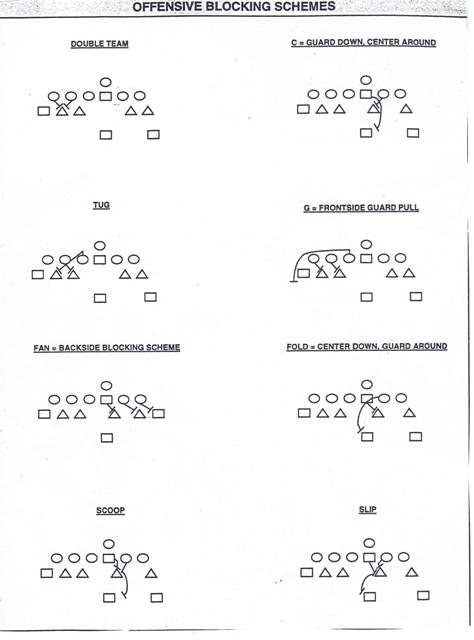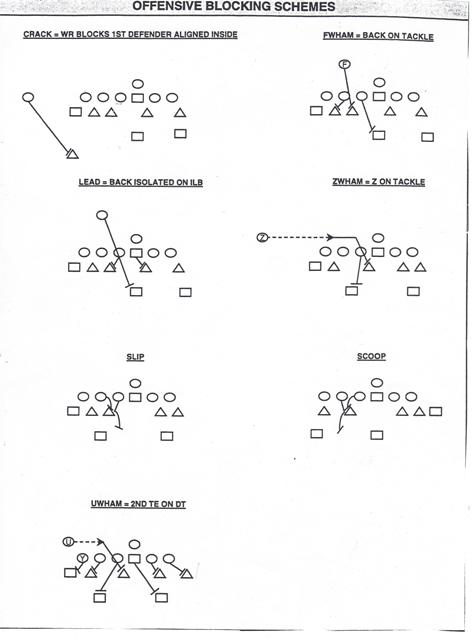|
Defensive Lineman Technique, Terminology, Drills, & Blocking SchemesThe success or failure of any defensive scheme begins up front. Defensive lineman must play physical, and with relentless pursuit of the ball carrier. By understanding what role is required of him within the defense, a d-lineman will allow himself to play faster and smarter. Against running plays, gap control is critical for a d-lineman. Vs. the pass, he must maintain lane integrity and containment of the QB. Proper technique against the run or pass is essential to a d-lineman’s success, and the defense as a whole. A busted assignment by any defensive lineman will break down the integrity of the entire defense. Defensive Line TerminologyTex- Tackle 1st –End 2nd on tite side Slant- 7 technique and 3 technique both penetrating their C and A gaps in even stack. Boom- Defensive end on the open side slanting from the C gap to the B gap on the snap of the ball. It becomes LB or DB force on that side, depending on the formation. Scoop Block- 2 blockers going away from center working on 1 defender and rubbing off on defender to next level. Slip Block- 2 blockers working in toward center on 1 defender and rubbing off on defender to next level. Fold Block- Center blocking back and guard around. Sift Block- O.T. on open side working against D.E. and Will backer. Wham Block- RB, U, or T.E. blocking on D.L. from a surprise position. Double Team- 2 O.L. blocking on 1 defender. C block- Guard blocking down on shaded nose or 1 technique and center pulling around. Tug Block- O.T. blocking down and O.G. pulling around. G Block- Frontside guard pulling to the outside. Fan block- OL blocking to the outside with ball going up inside. O block- offside guard pulling across the formation T block- offside tackle pulling across the formation. U block- offside T.E. pulling across the formation. E Block- True T.E. pulling across the formation. Eat block- T.E. Blocking down and tackle pulling around T.E. Bob Block- RB on LB Arc Block- T.E. blocking on force. Boss Block- RB blocking on force. Crack Block- WR blocking 1st defender aligned inside. 9 Technique- Foot to foot alignment on T.E., D gap on play to. On play away, squeeze C gap and contain. 7 technique- Outside eye to inside eye of T.E., C gap responsibility. Key T.E. to tackle. Play to, squeeze T.E. until ball crosses face. Play away, C gap with contain. 5 Technique- On tite side is C gap responsibility. Alignment is foot to crotch on tackle. Play to, control C gap on outside control of tackle. Play away, squeeze B gap and contain. 5 Technique- On open side, C gap responsibility. Alignment is foot to foot on tackle. Play away, read sift block and contain. Play to, squeeze tackle with C gap control. 3 Technique- Foot to crotch alignment on the guard, B gap responsibility. Hook block stay in B gap. Slip block squeeze guard and stay inside of tackle. 1 Technique- Outside eye to inside eye of the guard, A gap responsibility. Cut off block stay inside of guard. Scoop block squeeze the guard staying in the A gap. Shade- Foot to crotch on center. Reach block, stay in A gap playing the center. Slip block, squeeze the center staying in the A gap. 0- Alignment which is head up on the center. 2- Alignment head up on the guard. 4- Alignment head up on the tackle. 4I- Alignment outside eye to inside eye on the tackle 6- Alignment head up on the T.E. 8- Alignment is one yard outside the T.E. Twist- 3 technique penetrate A gap; other tackle raps, run thru stunt. *These terms will be used throughout this section, so to eliminate confusion is important to become familiar with them* Technique Numbering Below is an illustration of defensive technique numbering, and gap identification. It shows a defensive lineman’s alignment vs. an offensive lineman. Be sure to notice how the numbered technique correlates to a gap responsibility.

Offensive Blocking SchemesHere we have illustrations of offensive blocking schemes that correlate with the terminology provided above. The ability to identify and understand blocking schemes are important for defensive lineman because it helps them devise a plan of attack. 


|